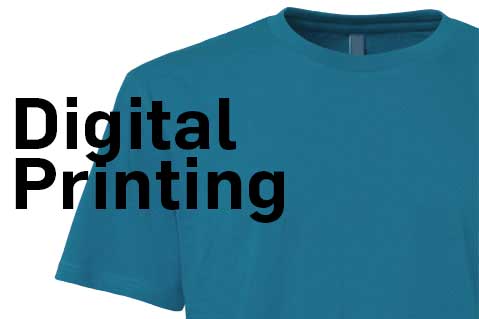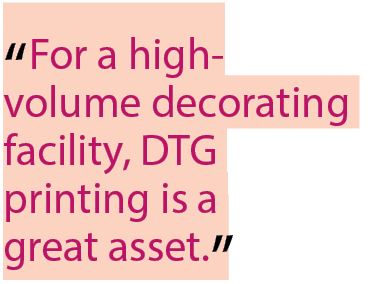Product Hub March 17, 2017
Get a Handle on Digital Printing
Digital printing has some advantages over traditional decorating methods, but you should do your homework before investing in the technology.
Lucas Guariglia, Rowboat Creative’s president and director of sales operations, talks about the future of digital printing and other mainstay decorating techniques, and what to consider before investing in digital printing equipment. Rowboat offers a variety of imprinting services, including direct-to-garment printing and screen printing.

Q: According to a recent ASI survey, digital printing techniques will experience significant growth over the next five years. Would you agree?
 Lucas Guariglia: While I agree there will be a rise in DTG printing and sublimation in the next few years, the crux of production will stay rooted in traditional screen printing and embroidery. For a high-volume decorating facility, DTG printing is a great asset; however, the technology still isn’t there to accommodate larger-volume orders requiring aggressive price points and quick turn times. In-line pre-treat and print will hopefully be an advancement all decorators can benefit from, and we’ve been working on a couple of different advancements and products that may assist the industry in pushing things forward.
Lucas Guariglia: While I agree there will be a rise in DTG printing and sublimation in the next few years, the crux of production will stay rooted in traditional screen printing and embroidery. For a high-volume decorating facility, DTG printing is a great asset; however, the technology still isn’t there to accommodate larger-volume orders requiring aggressive price points and quick turn times. In-line pre-treat and print will hopefully be an advancement all decorators can benefit from, and we’ve been working on a couple of different advancements and products that may assist the industry in pushing things forward.
Sublimation is also an amazing decoration technique; however, the process is limited by garment selection (production only works on 100% polyester garments). We do a lot of all-over sublimation at Rowboat, and with high quality control, production can be intense and a slower process. We also do a considerable amount of panel sublimation decorating, which involves sublimating on pre-cut garment pieces that are then sewn together in final construction to create fully cut and sewn items. This process is quite involved, but the result is a premium item our clients love.
Q: What advantages does digital printing have over screen printing?
LG: The most obvious advantage digital printing has over screen printing is that screen setups and art separations are nonexistent in DTG printing. Our production goes through an extra step of ensuring that artwork is set correctly to maximize production results; however, clients no longer need to incur high setup fees with larger color count designs. The process always allows for lower minimums. One point we stress to clients is that DTG printing should never be used as a means of pre-production camping. The process may help with clients being able to see actual sizing on garments; however, you need to explain to them that DTG printing is a completely different beast than screen printing.
The largest advantage of traditional screen printing is that once a run is in perfect registration and ready for production, the quantities produced hourly are astronomically larger than DTG. Again, being a higher-volume facility, we’re accustomed to running our presses at between 500 to 700 dozen per hour, depending on design requirements.

Q: What types of clients want photorealistic digitally printed images?
LG: They really vary. We see a good concentration of low-quantity orders being run via our DTG department for orders such as one-off events like bachelor/bachelorette parties and sporting events. We also see a large amount of DTG production used for clients that require print on demand. We house a complete fulfillment department and programs for many clients. Some of these clients are set up with print-on-demand programs that allow us to receive orders via our online portal; these orders head straight to production in our DTG department.
Q: Any tips for a decorator investing in DTG or sublimation equipment?
LG: My best advice is to do your homework. I’m a firm believer of knowing your equipment and processes inside and out. Talk to colleagues, talk to manufacturers, and talk to your clients to get an in-depth grasp of their needs. Like anything, investing in cheap machinery is going to hurt in the long run. You get what you pay for. You can’t expect a Pinto to drive like a Maserati. You also can’t expect clients to pay premium prices for terrible production, and facilities shouldn’t put customers in that position. We don’t have tons of top-secret production going on. We know our equipment, we know our strengths, we know our markets, we know our clients, and we aren’t afraid to push the boundaries.

Product Hub
Find the latest in quality products, must-know trends and fresh ideas for upcoming end-buyer campaigns.
